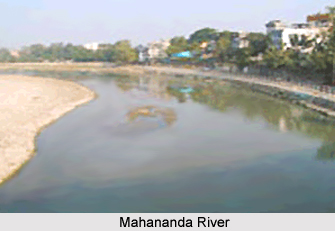 Kishanganj District is among the 38 districts of Bihar with its administrative headquarters at Kishanganj. A portion of Bihar bordering West Bengal, Bangladesh and Nepal has been developed as a district in the year 1990. Kishanganj District is located between latitude 25 degree 20 minutes to 26 degree 30 minutes north and longitude 87 degree 7 minutes to 88 degree 19 minutes east. Kishanganj, the district headquarters is 425 kms away from Patna. Total area occupied by this administrative district is 193,855 Hectares, out of which total cultivable area is 173,574 Hectares. Total population of the district as per 2001 Census is 1294063, out of which male population is 666910 and female population is 627153.
Kishanganj District is among the 38 districts of Bihar with its administrative headquarters at Kishanganj. A portion of Bihar bordering West Bengal, Bangladesh and Nepal has been developed as a district in the year 1990. Kishanganj District is located between latitude 25 degree 20 minutes to 26 degree 30 minutes north and longitude 87 degree 7 minutes to 88 degree 19 minutes east. Kishanganj, the district headquarters is 425 kms away from Patna. Total area occupied by this administrative district is 193,855 Hectares, out of which total cultivable area is 173,574 Hectares. Total population of the district as per 2001 Census is 1294063, out of which male population is 666910 and female population is 627153.
History of Kishanganj District
Kishanganj was the old and important sub-division of Purnia. After the long and hard struggle of 17 years, Kishanganj District came into existence on 14th of January 1990. During Mughal period Kishanganj District was a part of Nepal and was known as Nepalgarh. Shah Alam appointed Mohammed Raza at Surajapur for administration. Mohammed Raza captured the fort of Nepalgarh and the name gets converted to Alamganj and administration gets shifted to Khagra. Historical `Khagra Mela` is held every year at Kishanganj.
Geography of Kishanganj District
Geography of Kishanganj District includes vast forest area, which is mainly situated at Thakurganj and Terhagach. The climate of Kishanganj District is basically humid. Maximum temperature recorded in the district is 41 degree Celsius and May is the hottest month. Minimum temperature recorded is 5 degree Celsius in January. Average rainfall is 2250 mm. Light sandy soil is mainly found in the district. At Kishanganj District, two types of minerals are found and these are Silica and Iron. Silica is used in construction work and Iron is found in large quantities at different places of Kishanganj. Mahananda River, Kankai , Mechi, Donk, Ratua and Ramzan Sudhani are the main rivers flowing through the district. Irrigation facilities available in the district are mainly in the form of Hand pumps, tube wells and wells. Wheat, Maize, Jowar, Mustard and Jute are the main crops cultivated in the district.
Tourism in Kishanganj District
Tourism in Kishanganj District offers visits to several sites including nature parks and religious places. The main attractions are Nehru Park, Khagra Mela, Odraghat, Shri Digambar Jain Temple and more. Nehru Shanti Park is about 1 km away from the Kishanganj railway station. There is one big statute of Lord Buddha, which is the attraction of this park.



















